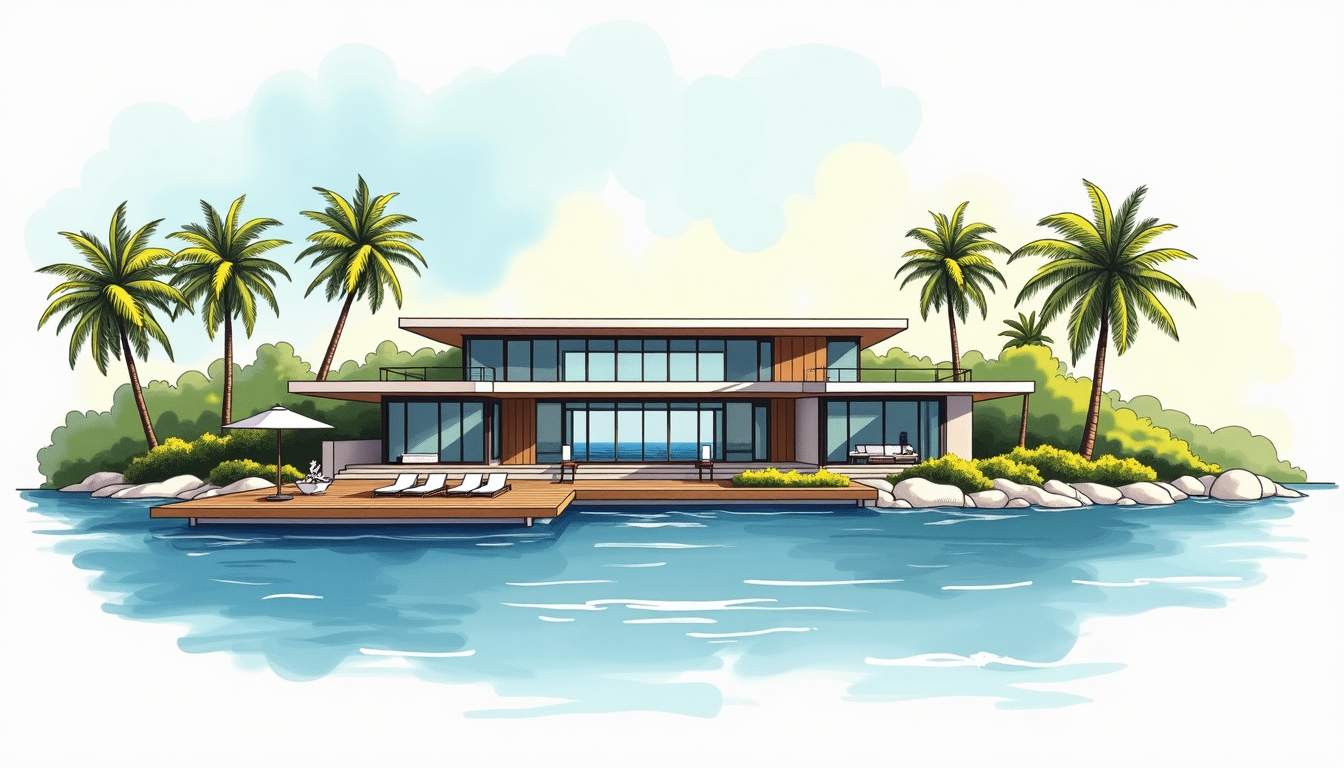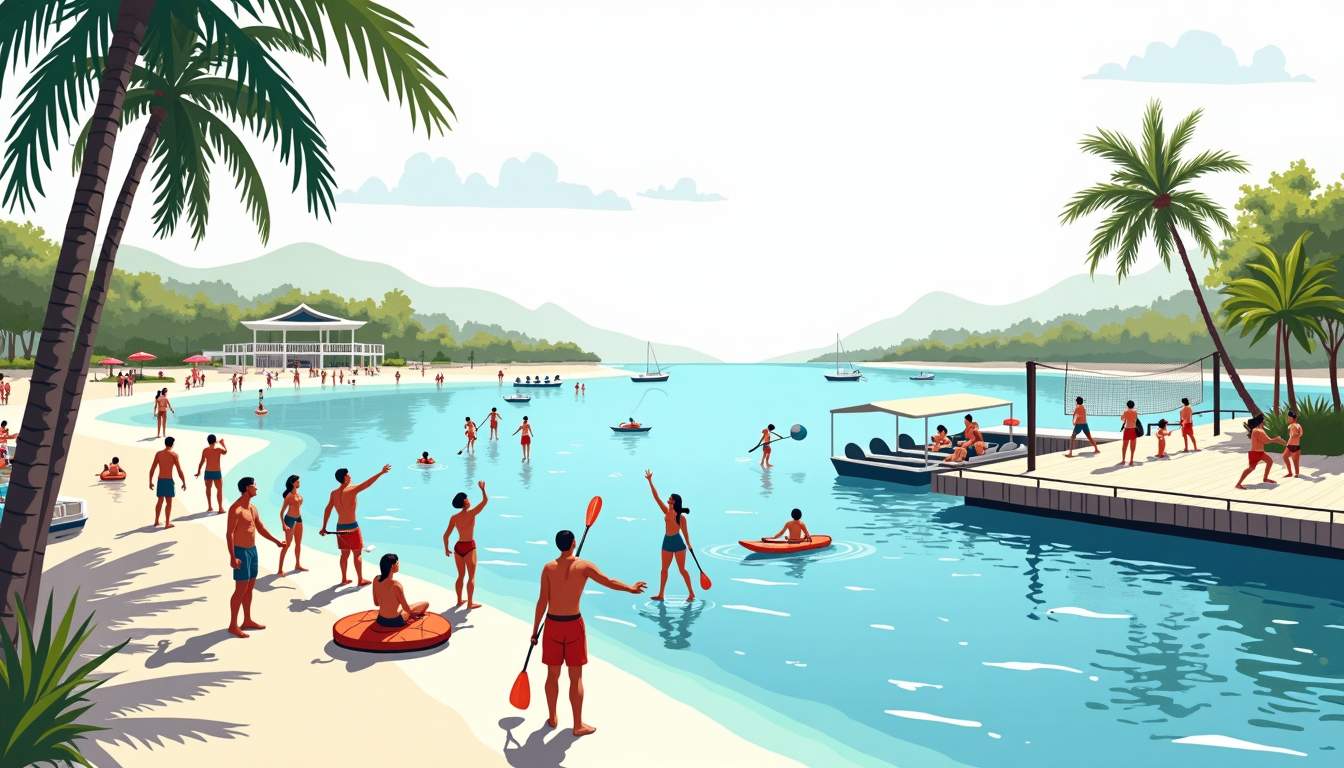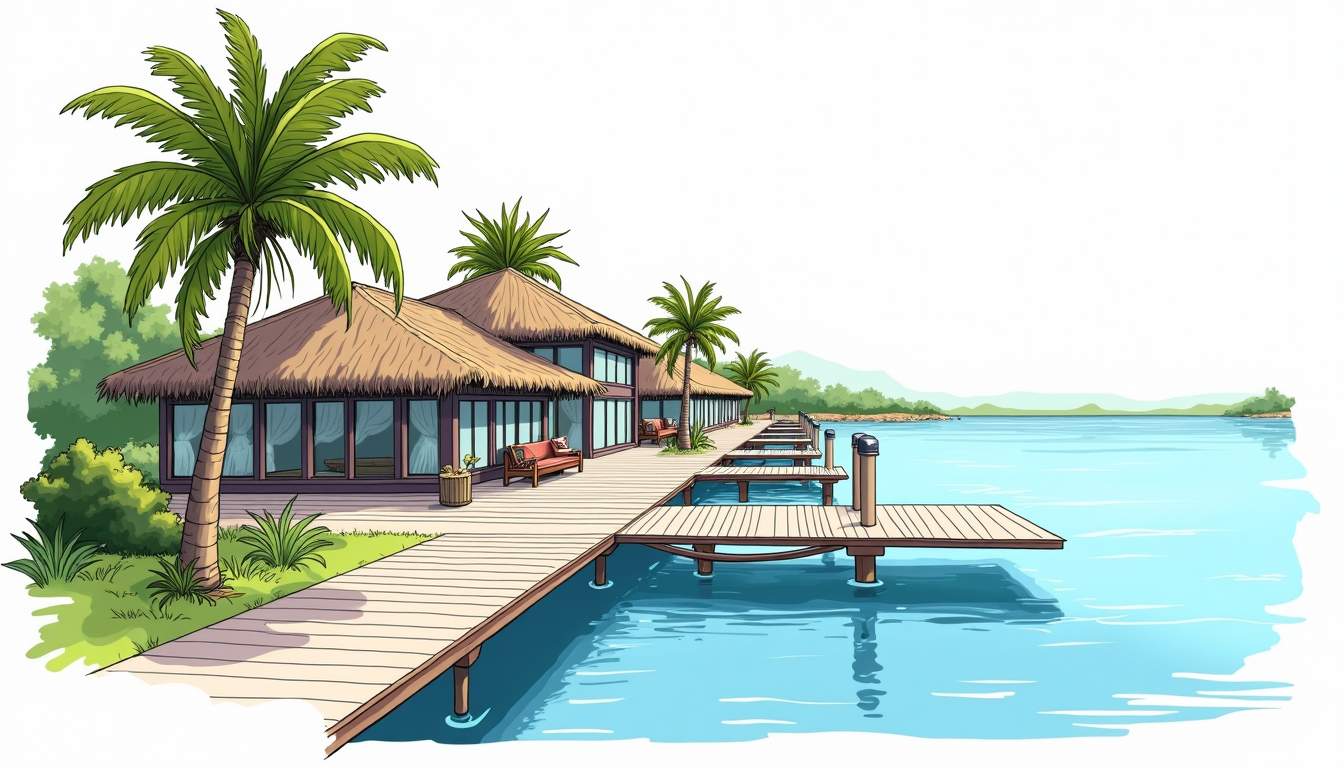
Waterfront properties tap into a timeless appeal: the steady rhythm of lapping water, expansive skies, and access to sunlight and fresh air. When a residence includes a private boat slip, that appeal multiplies. The ability to walk out from a home or community dock to a moored boat shortens the distance between daily life and leisure, turning ordinary weekends into mini getaways.
Beyond the obvious recreational advantages, waterfront living often fosters a resort-style atmosphere. Landscaped promenades, marina restaurants, and clubhouse amenities blend with nautical elements—palm trees, teak decking, and sunset-facing terraces—to create an environment that encourages relaxation and socializing. This kind of setting changes how time at home is experienced, with more spontaneous outings, more outdoor dinners, and more opportunities to entertain against a scenic backdrop.
Another subtle yet profound benefit is the enhanced sense of wellbeing that comes from regular close contact with water. Studies have shown that living near water can reduce stress, boost mood, and even improve cognitive function. The visual and auditory presence of water acts as a natural calming influence, creating an ideal environment for mindfulness and reflection. Additionally, many waterfront communities emphasize walking and biking paths, encouraging residents to adopt an active lifestyle that complements the serene environment.
Furthermore, the dynamic environment of a waterfront locale offers endless opportunities for engaging with nature. Residents often witness a variety of wildlife, from graceful birds gliding overhead to fish darting beneath the surface. The changing tides and weather patterns provide a constantly shifting panorama, ensuring that no two days look exactly the same. For families, this creates a living classroom full of discovery and connection with the natural world, making waterfront living rich in experience as well as comfort.
Resort-style developments with boat slips usually offer a curated set of amenities that complement the waterfront lifestyle. These include pools and hot tubs, fitness centers overlooking the water, private beaches or sanded shorelines, and marina services such as fueling stations, pump-out facilities, and on-site maintenance crews. Together, these features reduce friction around boating and water activities while elevating the everyday living experience.
Additional perks often found in such communities are concierge services, on-site dining options, event spaces, and walking or biking trails that connect the residential areas to commercial hubs. For many residents, the convenience of having everything—from gear storage to social venues—within a short walk or golf-cart ride is what turns a property into a destination rather than simply a place to live.
Furthermore, many resort-style communities integrate waterfront parks and picnic areas that promote outdoor family gatherings and social events. The careful landscaping with native plants and shaded boardwalks not only enhances the visual appeal but also provides natural habitats for local wildlife, creating a serene and immersive environment. These elements blend functionality with aesthetics, fostering a strong sense of community among residents who share a passion for waterfront living.
Technology integration is increasingly becoming a hallmark of these communities, with features like app-based reservation systems for boat slips, digital security access, and high-speed Wi-Fi connectivity throughout common areas. Such modern conveniences ensure residents can seamlessly manage their lifestyle needs, stay connected, and enjoy a secure, hassle-free environment that complements the leisurely pace of waterfront life.
Private boat slips provide exclusive access, usually adjacent to a specific unit or dockside parcel, allowing boat owners to keep their vessel ready for immediate departure. This convenience is a major draw for avid boaters but can come at a higher purchase price or HOA fee. Shared slips, on the other hand, lower ownership costs and can be more flexible, though they may require scheduling and compromise with neighbors.
Maintenance responsibilities are another factor. Private slipholders often handle minor upkeep directly, while shared-slip arrangements typically rely on homeowners associations or marina managers for upkeep. Choosing between private and shared slips should depend on lifestyle, budget, and how frequently the boat will be used.
Additionally, shared slips can foster a greater sense of camaraderie among boaters, encouraging social interaction and the sharing of knowledge related to boating safety and maintenance. Conversely, private slips afford greater control over access and security, which can be particularly important for owners of larger or more valuable vessels. Weighing these social and practical factors is key to finding the right fit within any given resort-style community.
Architectural and landscape design play a big role in delivering that resort-like feel. Large windows, expansive decks, and sliding glass doors help bring the outdoors in, maximizing views and natural light. Materials that resist salt air and humidity—such as stainless steel, composite decking, and marine-grade finishes—extend the life of outdoor spaces and reduce long-term upkeep.

Thoughtful landscaping softens hard edges and creates natural buffers between homes and the water. Native plantings conserve water and attract wildlife, while strategically placed lighting can highlight pathways and waterfront edges for both safety and ambiance. For multi-unit developments, communal plazas and boardwalks invite neighborly interaction and community programming—movie nights, farmers markets, and dockside concerts are common examples.
Choosing furnishings and flooring that perform well in humid or salt-laden environments is essential. Outdoor-rated fabrics resist mildew and fading, while slip-resistant, quick-dry flooring reduces hazards near pools and docks. Inside, durable surfaces like porcelain tile or engineered wood with a protective finish maintain a refined look without demanding constant maintenance.
While the presence of a boat slip naturally centers the lifestyle around the water, resort-style waterfront communities typically support a broader range of activities. Paddleboarding, kayaking, sailing, and fishing are staples, but many developments also incorporate tennis courts, pickleball courts, cycling paths, and fitness classes along the waterfront. These complementary amenities make it easy to mix activities across a single day—morning yoga on the lawn, an afternoon cruise, and an evening barbecue at a communal pavilion.

Seasonal programming can enhance the sense of community. Regattas, holiday flotillas, and beach clean-up days provide social structure and foster connection among residents. A well-managed calendar of events helps create a lively, engaged neighborhood where newcomers quickly find their place.
Resort-style living does come with ongoing costs. HOA fees often cover maintenance of docks, landscaping, security, and shared amenities, and can be higher in properties with extensive services. Slip rental or ownership fees add to monthly expenses, and permanent boat ownership brings insurance, storage, and repair costs. Budgeting for these elements is crucial when evaluating the true cost of waterfront living.

Maintenance extends beyond the obvious boat care: seawalls, bulkheads, and erosion control require periodic attention, and coastal weather events can create sudden needs for repair. Choosing properties with robust, proactive management and well-funded reserve accounts reduces the likelihood of surprise assessments and ensures the community remains attractive and functional over time.
Insurance considerations for waterfront properties include wind, flood, and hurricane coverage, where applicable. Flood insurance is often separate from standard homeowners insurance and may be mandatory in certain zones. A good community will have comprehensive emergency plans, designated evacuation routes, and secure storage options for watercraft and gear. Residents should also be familiar with marina protocols for securing boats during storms.
Selecting the ideal waterfront home involves balancing lifestyle desires with practical realities. Consider how often the boat will be used, whether the community’s boating restrictions align with intended activities, and if the local waterways support navigation for the craft in question. Visit at different times of day and during varying weather to assess noise, traffic, and sun exposure.
Proximity to services matters: grocery stores, medical facilities, and transportation options influence daily convenience. Evaluate the community’s governance structure, review HOA covenants, and examine recent meeting minutes or budget reports to understand financial health and future plans. Speaking with current residents can provide unfiltered insights into the benefits and challenges of living there.
Access to open water, tidal patterns, and channel depth should inform boat size and type decisions. Areas with strong currents, narrow channels, or significant commercial traffic require more navigational skill and might limit certain recreational activities. Environmental considerations—such as protected wetlands or seasonal wildlife habitats—can impact boating access and community regulations.
Resort-style waterfront communities foster a unique social rhythm. Waterfront barbecues, dockside cocktail hours, and shared interest groups—cruising clubs, fishing teams, and sailing schools—create opportunities to meet neighbors and form lasting friendships. Communities that prioritize programming often feel more cohesive, as residents gather regularly for common pursuits.
Entertaining at a waterfront home tends to be informal and centered around views and the outdoors. Built-in grilling stations, covered patios, and guest slips for visiting boats make hosting easy and memorable. Thoughtfully designed outdoor kitchens and seating areas allow for multi-generational gatherings where everyone can enjoy the scenery.
Waterfront properties with boat slips typically retain strong market appeal, driven by scarcity and lifestyle demand. Factors that influence long-term value include water quality, marina management, local economic health, and climate resilience measures. Properties that invest in environmentally sensitive design and strong infrastructure tend to hold their value better over time.
Resale success is also tied to how well a community is perceived by the broader market. Well-maintained common areas, transparent governance, and active community events make a development more attractive to prospective buyers. Conversely, deferred maintenance or contentious HOA issues can depress values, so due diligence is essential.
Resort-style living with a boat slip offers a compelling blend of relaxation and active recreation, combining private retreat-like spaces with communal amenities that encourage social life and convenience. For those who value immediate access to the water, the sensory pleasures of waterfront settings, and a community atmosphere that feels like an ongoing vacation, this lifestyle can be deeply rewarding.
Choosing such a property requires careful consideration of costs, management quality, environmental factors, and personal boating habits. With the right match, a waterfront home with a boat slip becomes more than real estate; it becomes a daily invitation to explore, socialize, and savor the rhythms of life on the water.
Embrace the ultimate waterfront lifestyle at Tennessee National, where luxury living meets resort-style amenities, including a private marina and scenic nature trails. Whether you desire a ready-to-move-in residence or a custom-built home, our premier gated community offers everything you need to enjoy the perfect balance of relaxation and adventure. Schedule a private tour today and start experiencing resort-style living with a boat slip tailored just for you.